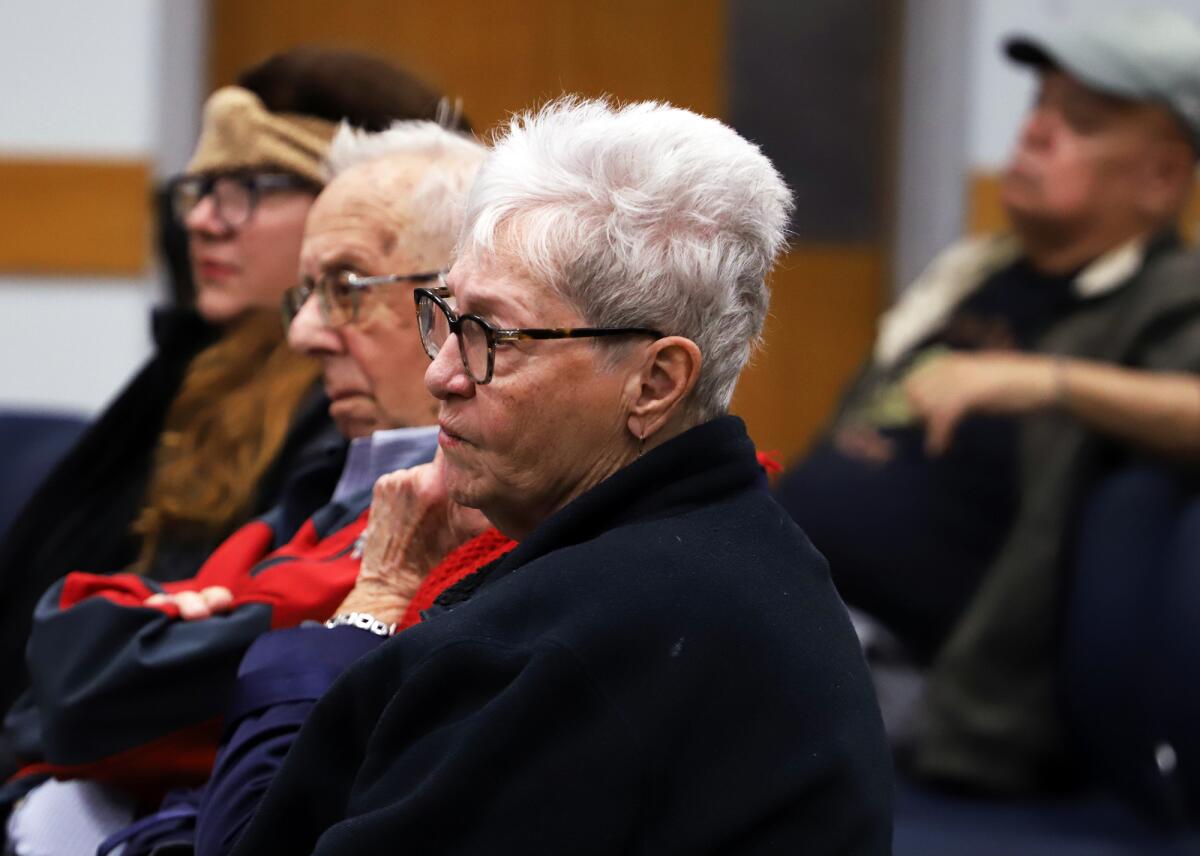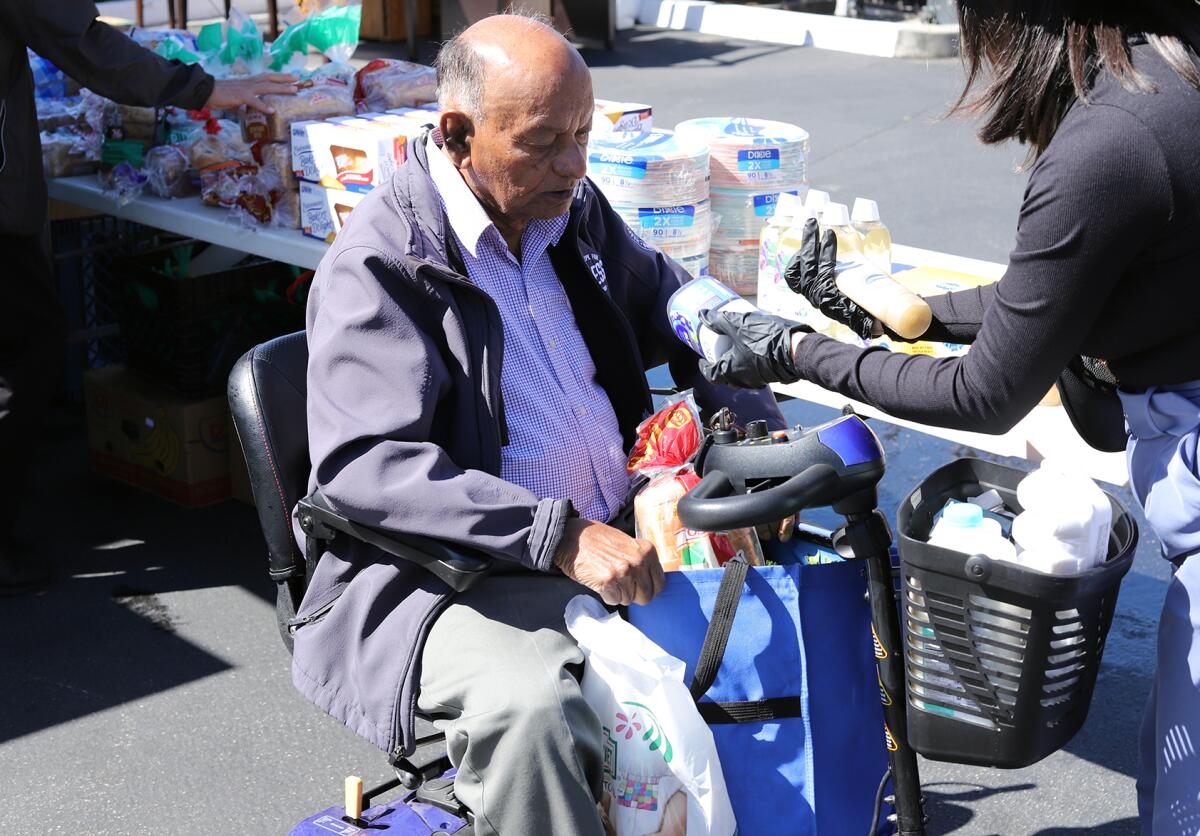New report on aging in Orange County outlines key concerns among seniors

- Share via
An annual report on the status of Orange County’s senior population continued to shed light on issues critical to older adults — from housing insecurity to loneliness.
Released earlier this month by the Orange County Aging Services Collaboration, the 2024 report incorporated a survey of more than 3,200 seniors 65 and older for the first time in five years to streamline data and draw sharper conclusions than in the past.
“This report tells a story that we need to focus on the aging population,” said Jocelyn Rubio-Melendrez, collaborative programs director for OCASC. “As we know, older adults are the fastest growing population and also, unfortunately, one of the fastest growing among the unhoused, as well.”
The county is home to about 470,000 seniors 65 and older, or roughly 16% of the population.
White residents account for 60% of that demographic while Latinos comprise 15.5% of that same age bracket. Asian Americans and Pacific Islanders constitute less than a quarter of the population.
According to last year’s report, the number of all seniors is expected to almost double by 2050 and comprise 28% of O.C. residents, a wider demographic trend sometimes dubbed as a “silver tsunami.”
To gain more insights into the concerns of older adults ahead of that shift, a survey conducted this year from January to April asked them 11 questions about various aspects of their life including health, social engagement, transportation, food security and housing security.
Twice as many women as men responded.
The ethnic demographics of respondents largely mirrored the county’s elder population with 60% being white, 22% Asian American and 13% Latino.
Among the report’s key findings is that 43% of O.C. seniors reported being worried about the rising cost of housing in the county.
In general, most respondents felt most secure when living with family.
Just over half of all those surveyed live with family or their spouse. At 47%, older white people were the most likely to live alone, next to native Hawaiian and Pacific Islander populations in the county.

In terms of food security, more than three-quarters of those surveyed didn’t cite worries about running out of food before being able to buy more, even as inflation has driven up the price of many food products.
But among older Latinos, 34% did harbor such concerns.
The report also looked at social engagement and loneliness among O.C. seniors.
While 48% of survey respondents reported having daily social interactions, 7% stated that they almost never see any family or friends, a statistic that Rubio-Melendrez finds significant.
“There’s so many more health side effects to that,” she said. “That’s something we need to highlight, whether improving existing programs or creating different programs altogether.”
The ethnic and racial breakdown allowed for insights into health disparities among O.C.’s senior community.
Although many older adults reported being in good health, there is a “pronounced disparity” among those who acknowledged having multiple health issues, particularly among American Indian, Alaska Native, Latino and Black populations.
Roughly 10% of those ethnic and racial groups reported more than one health issue, which is a much higher tally than other surveyed groups.
Following Gov. Gavin Newsom’s executive order in 2019 to create a statewide master plan for aging, the Orange County Board of Supervisors commissioned a needs assessment for its elderly population in January 2023.
The survey wrapped up in December with data being analyzed to help guide the county’s development of its own master plan for aging.
The needs assessment is expected to be completed this year while the master plan has a targeted completion date of summer 2025, according to Jamie Cargo, a spokesperson for the county Social Services Agency.
The collaborative, which was founded 15 years ago and now includes 40 member groups, is not involved in the needs assessment but works closely with the county’s Office on Aging. Rubio-Melendrez cited a need for more collaboration between county government and senior groups, especially in light of the report’s findings.
“We need to do something about it,” she said. “We can’t wait for things to happen, unfortunately. We need to be prepared. After reading this report and seeing where the barriers and gaps are at, we need to work cooperatively to tackle these issues.”
All the latest on Orange County from Orange County.
Get our free TimesOC newsletter.
You may occasionally receive promotional content from the Daily Pilot.




